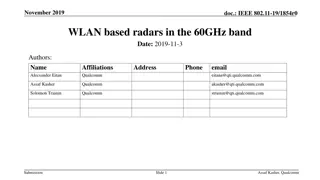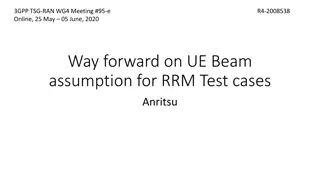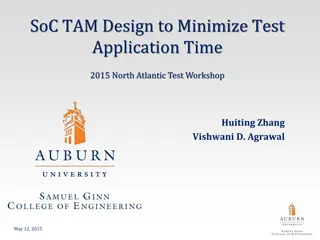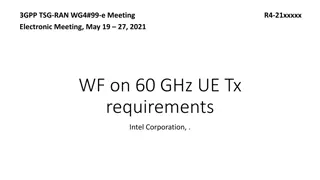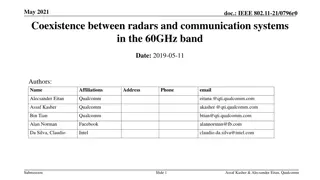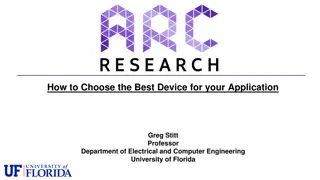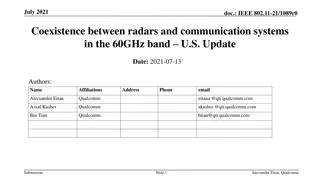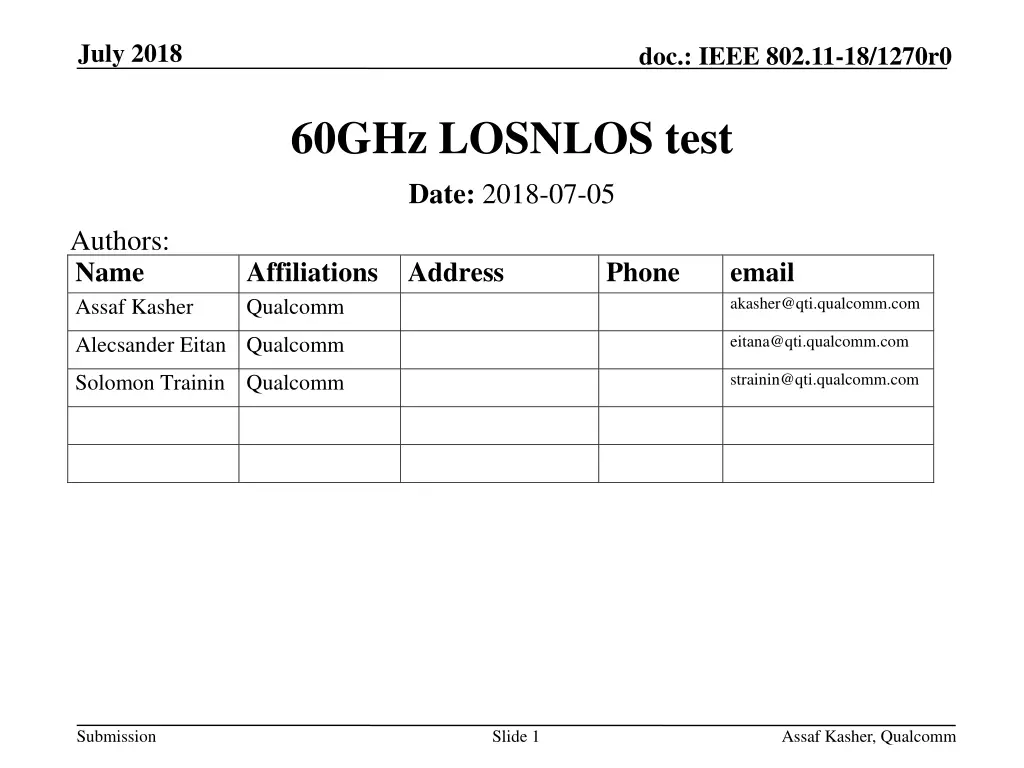
IEEE 802.11 Protocol for LOS/NLOS Determination Based on Polarization
"Proposing a protocol within IEEE 802.11 standard addressing Line-of-Sight (LOS) and Non-Line-of-Sight (NLOS) transmissions by utilizing different polarization techniques. The protocol involves transmitting and receiving with constant AWV, switching polarizations for measurements, and introducing new exchanges for LOS tests. Explore the innovative approach presented in this document for enhanced wireless communication reliability and efficiency."
Download Presentation

Please find below an Image/Link to download the presentation.
The content on the website is provided AS IS for your information and personal use only. It may not be sold, licensed, or shared on other websites without obtaining consent from the author. If you encounter any issues during the download, it is possible that the publisher has removed the file from their server.
You are allowed to download the files provided on this website for personal or commercial use, subject to the condition that they are used lawfully. All files are the property of their respective owners.
The content on the website is provided AS IS for your information and personal use only. It may not be sold, licensed, or shared on other websites without obtaining consent from the author.
E N D
Presentation Transcript
July 2018 doc.: IEEE 802.11-18/1270r0 60GHz LOSNLOS test Date: 2018-07-05 Authors: Name Assaf Kasher Affiliations Address Qualcomm Phone email akasher@qti.qualcomm.com eitana@qti.qualcomm.com Alecsander Eitan Qualcomm strainin@qti.qualcomm.com Solomon Trainin Qualcomm Submission Slide 1 Assaf Kasher, Qualcomm
Assaf Kasher, Qualcomm Slide 2 doc.: IEEE 802.11-18/1270r0 Abstract In this contribution we propose a protocol to enable determining whether a transmission is LOS or NLOS based on transmitting and receiving through different polarization. PHY support was implemented in 11ay Submission
Assaf Kasher, Qualcomm Slide 3 doc.: IEEE 802.11-18/1270r0 How it should work Transmitted using constant AWV Different Polarizations Received using constant AWV Different Polarizations STF Data STF Data STF Data STF Data Transmitted using constant AWV Different Polarizations Received using constant AWV Different Polarizations The ISTA sends a frame with TRN subfields. In every TRN subfield it switches polarization while maintaining the same AWV. The RSTA receives this while switching polarization on every TRN subfield The RSTA performs measurements of amplitude and phase on all these fields. The RSTA sends a frame with TRN subfields. It switches Polarization on every subfield. The ISTA switches polarization on every received TRN subfield The RSTA sends measurements results (on the first frame) to the ISTA Submission
Assaf Kasher, Qualcomm Slide 4 doc.: IEEE 802.11-18/1270r0 How Does It work (cont.) How does the RSTA knows that the packet contains TRN subfields that require polarization switching: A field in the PHY header indicates that. Another field in the header indicates that the TRN field Does the response need to be immediate? In the FTM process we separate the request and response to two separate medium accesses. Can it work in DMG We cannot indicate the required fields in the DMG header, only in the EDMG Will complicate the protocol. Submission
Assaf Kasher, Qualcomm Slide 5 doc.: IEEE 802.11-18/1270r0 What we propose? FTM(LOS Test Request) ACK FTM(LOS Test Response) ACK A new exchange: FTM with LOS test request/ACK FTM with LOS test response/ACK These new type of exchanges The FTM LOS Text request is identified by a new trigger value PHY can analyze required actions from the EDMG PHY-header The FTM response is a regular FTM frame with results + EDMG/DMG Channel Measurement Response Paired with the request using the dialog token Submission
Assaf Kasher, Qualcomm Slide 6 doc.: IEEE 802.11-18/1270r0 Required Changes Add a field to DMGz/EDMGz direction measurement parameter element indicating that LOS test may happen before or between the FTM bursts. Add a new trigger value to the FTM trigger indicating the start of an FTM LOS test exchange Allow transmission of EDMG/DMG channel measurement feedback element in an FTM (LOS test response) frame. Response frame with trigger set to 0. Paired with request by the dialog token. Submission
Assaf Kasher, Qualcomm Slide 7 doc.: IEEE 802.11-18/1270r0 Straw Poll Do you agree to the changes proposed in slide 6. Submission
doc.: IEEE 802.11-18/1270r0 Backup Submission Slide 8
doc.: IEEE 802.11-18/1270r0 Justification At even TRN subfields indices STA A transmits in Polarization 1 (can be either H or V in its point of view) STA B receives in Polarization 1 The power is measured At odd TRN subfields indices STA A transmits in Polarization 1 + 90 STA B receives in polarization 1 + 90 In LOS the power remains the same as the difference in TX and RX polarization remains the same In NLOS, the reflection may have different power change for different polarizations, and also the phase may change. Comparing the power, the device that has the power measurement can determine that the measurement is based on reflection(s). Submission Slide 9




